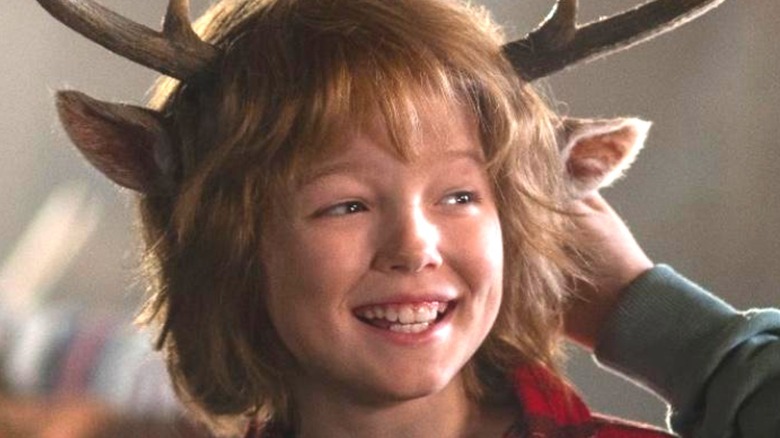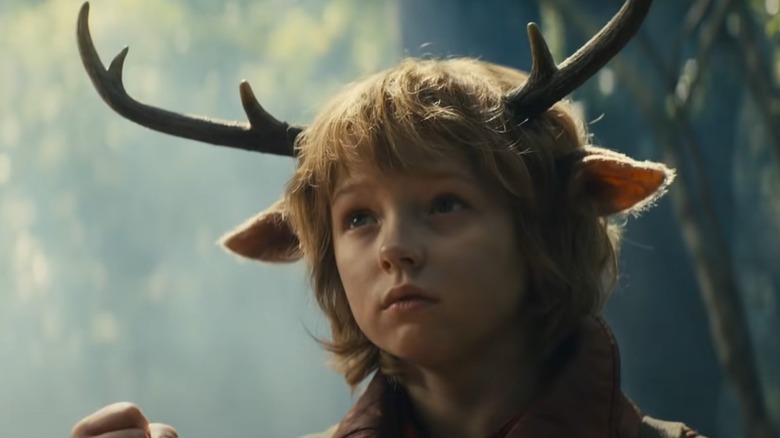What You Didn't Know About Gus' Ears On Sweet Tooth
CGI artists have always had one eye carefully trained on a single goal: transitioning from making audiences go "What the hell is that?" to convincing them that they're not seeing anything unusual at all. They've gotten pretty good at it, too. From "The Adventures of Young Sherlock Holmes" and its surreal stained glass knight, through the awkward Ang Lee Hulks and Scorpion Kings of the early 2000s, the art form progressed, until eventually the "Avengers" movies could seamlessly introduce an eight-foot tall purple bodybuilder threatening the cosmos with a bedazzled oven mitt.
However, the visual wizardry has a down side. The more realistic and ubiquitous animation becomes, the easier it is to take for granted. See something remarkable, peculiar, and unsettlingly realistic on your television screen? The smart money's probably on a team of digital artists clicking it into existence.
Which makes it so much more impressive when something like Netflix's "Sweet Tooth" comes along, introduces you to a deer/boy hybrid, and tricks your brain using nothing but practical effects, humble prosthetics, and a small fortune's worth of animatronic puppetry.
Gus' ears are more complicated than you might think
According to Netflix, the production team on "Sweet Tooth" drew a lot of inspiration from the work of Jim Henson, and wanted to shoot as much of the show as possible with puppets and practical effects. Against all odds, this included the baby hybrids featured in the first episode, Bobby the groundhog boy, and the impressively expressive ears on Gus' noggin.
In the case of Gus' ears, the process was even more complicated than you might think. The ears themselves were puppets, controlled via a transmitter by Grant Lehmann, a puppeteer who previously worked on "The Wolverine" and "I, Frankenstein." Lehmann and Gus actor Christian Convery would practice scenes together, working out which expressions Lehmann would have to match at any given moment and allowing him to compensate for a fraction-of-a-second delay between his controls and the animatronics. During filming, the operator would follow Convery around, keeping eyes on the performer's face to ensure that the ears would respond appropriately to in-universe stimuli.
The results speak for themselves. Watch carefully, and you'll notice that Gus' acute hearing will react to noises just before the rest of his body knows what's happening. It's just one of a pile of small, intricate touches that have critics and audiences hypnotized by the show.

